Enchanting arrangement of points above private space programs
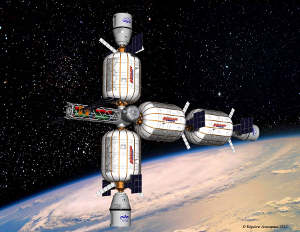 I started writing this post almost a year ago, after the first successful docking of SpaceX Dragon with the ISS. I decided to make for my own use a small quick reference book on existing private companies trying to explore outer space. However, over the year, this list has reached such proportions that I thought this should be shared with the world. The “dotcom boom” of the space industry is, of course, far, but rapid development is evident. Moreover, along with space startups (from Silicon Valley, of course! [Although it seems that the space industry has its own piece of paradise in California - Mojave]) old-time companies founded in the 70s 80 years of the last century. It seems that the era of “lost interest in space” is becoming a thing of the past.
I started writing this post almost a year ago, after the first successful docking of SpaceX Dragon with the ISS. I decided to make for my own use a small quick reference book on existing private companies trying to explore outer space. However, over the year, this list has reached such proportions that I thought this should be shared with the world. The “dotcom boom” of the space industry is, of course, far, but rapid development is evident. Moreover, along with space startups (from Silicon Valley, of course! [Although it seems that the space industry has its own piece of paradise in California - Mojave]) old-time companies founded in the 70s 80 years of the last century. It seems that the era of “lost interest in space” is becoming a thing of the past.Speaking of private space companies, it must be borne in mind that, in fact, the border between private and public space is not so clear. Especially in the part of the American space program, where contractors have always been private companies, for example, Atlas rockets were made by General Dynamics, and later by Lockheed Martin and the United Launch Alliance (which includes Lockheed Martin and Boeing), all are private companies. And even here, for example, the de jure RSC Energia is a joint-stock company (and only 44% of the shares in it belong to the state). Usually, private space companies are considered to be those in which the share of private capital is overwhelming (80-90%), which place space exploration and the production of space technology as their main task, while state space programs for them are not the only source of income. In general, the difference is felt immediately between Virgin Galactic and RSC Energia, and it is harder to notice between Lockheed Martin and Orbital Sciences.
Special mention should be made of two NASA programs focused on the development of the private sector in space exploration, Commercial Orbital Transportation Services (COTS, Commercial Orbital Transportation) and Commercial Crew Development (CCDev, development of a commercial manned spacecraft), which represent a system of grants to private companies, but provided that the state’s investments do not exceed 20% of the development cost. In the future, NASA will enter into contracts for servicing the ISS with companies that have won grants.
It should also be noted that the success of private companies in building satellites and light launch vehicles (mostly solid propellant) has been impressive for a long time. It is worth noting the Scorpius Space Launch Company, which has in its arsenal 2 light rockets (SR-M and Sprite), and is developing another 3, the Rocket Lab, Orbital Transport & Raketen AG and, Orbital Sciences Corp, which will be discussed below.
Launch Vehicles and Spaceships
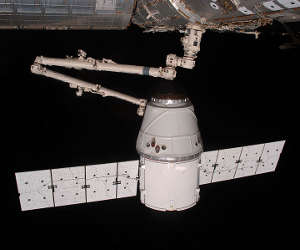 SpaceX (Space Exploration Technologies Corporation) —The most famous private space company, the developers and owners of the Dragon ship and Falcon launch vehicles. Founded in 2002 by Alan Mask (one of the founders of PayPal). SpaceX is considered to be the pioneers of private space. Their Falcon-1 launch vehicle was the first liquid fuel PH developed by private funds and the second private PH launched into orbit (the first was the Pegasus, developed by Orbital Scietce, but it is launched from the carrier and solid fuel) The Dragon ship was the first to dock with the ISS on May 25, 2012. At the moment, among other things, they have a program for creating reusable launch vehicles, in particular, the Falcon-9-R, which the Mask is said to be able to reduce the cost of outputting the payload to orbit almost twentyfold. As part of this project, test launches of the Grasshoper rocket are currently being carried out, which on April 14 of this year rose to a height of 250 m and successfully landed.
SpaceX (Space Exploration Technologies Corporation) —The most famous private space company, the developers and owners of the Dragon ship and Falcon launch vehicles. Founded in 2002 by Alan Mask (one of the founders of PayPal). SpaceX is considered to be the pioneers of private space. Their Falcon-1 launch vehicle was the first liquid fuel PH developed by private funds and the second private PH launched into orbit (the first was the Pegasus, developed by Orbital Scietce, but it is launched from the carrier and solid fuel) The Dragon ship was the first to dock with the ISS on May 25, 2012. At the moment, among other things, they have a program for creating reusable launch vehicles, in particular, the Falcon-9-R, which the Mask is said to be able to reduce the cost of outputting the payload to orbit almost twentyfold. As part of this project, test launches of the Grasshoper rocket are currently being carried out, which on April 14 of this year rose to a height of 250 m and successfully landed.Orbital Sciences Corp - an American company specializing in the manufacture of spacecraft and launch vehicles, was founded in 1982. Has been engaged since in the release of small RN (Minotaur, Pegasus, Taurus, etc.) and satellites (communications mainly, but there are also resource, for example). However, they now have their own Cygnus spacecraft and medium-weight Antares RN, which, along with Dragon and Falcon, participate in NASA's Commercial Orbital Transportation Program (COTS) for delivering cargo to the International Space Station (ISS) after completing the Space Shuttle program . By the way, the Antares RN, which was successfully tested in April of this year, is partially assembled here - one of its steps was developed at Yuzhnoye Design Bureau (Dnepropetrovsk), and the NK-33 / AJ26 engines are assembled in Samara.
Stratolaunch Systems is a new company by Paul Alain, and Burt Rutan, whose main project is the launch of launch vehicles (developed by Orbital Sciences) from an aircraft carrier (developed by Scaled Composites, see below).
Reaction Engines Ltd is a British company, the main development is the Skylon aerospace aircraft. It has been developed since 1982 (initially as HOTOL under the auspices of Rolls Royce and British Aerospace), until we got to the tests of the key system of the propulsion system - the cooler. However, if Skylon is still built, then 1 kg of cargo can be put into orbit for $ 400 instead of the current 2000.
Armadillo Aerospace - founded by John Carmack (author of Quake, DOOM, etc.) in the year 2000. The initial goal of the company was to develop a suborbital spacecraft, in order to win the Ansari X Prize. Later they participated in several competitions of the X Prize Foundation, including received $ 350 thousand for the first place in the 2008 Lunar Lander Challenge and $ 500 thousand for the second place in the same competition in 2009, losing the first place to Masten Space Systems ($ 1 million). The Armadillo Aerospace rocket technology fleet includes 6 machines: Pixel, Texel and Quad landing modules, reusable Mod and SuprMod vertical take-off and landing machines, which should become suborbital, and research (in the future reusable, also vertical take-off and landing) Stig rocket. Quad acquired NASA to test its ALHAT LIDAR as part of the “Project-M” (sending a robot astronaut to the Moon). Derivatives from SuprMod plans to use Space Adventures for suborbital tourism, NASA is also interested in this project within the framework of the “Flight Opportunities Program”.
PlanetSpace (formerly Canadian Arrow) - founded in Canada as a Canadian Arrow project, which was considered as one of the most likely winners of the Ansari X Prize along with TierOne and Armadillo, but after losing the race, the founders abandoned plans for space tourism, founded PlanetSpace, the main The purpose of which was to participate in the NASA "Commercial Orbital Transportation" program. Canadian Arrow was a two-stage launch vehicle with a returnable capsule. COTS NASA PlanetSpace planned to participate with its space plan Silver Dart, launched from Canadian Arrow with a PH, but later this PH was rejected in favor of Lokhidov Athens-3 (Athena III). As a result, the competition won Orbital Sciences.
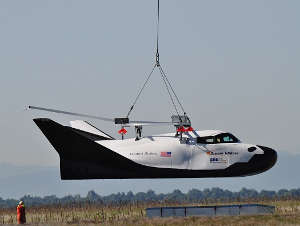 SpaceDev (now part of Sierra Nevada Corporation) - The company was founded in 1997 in California, and specialized in the production of spare parts for satellites, in the 98th acquired the intellectual property of the closed American Rocket Company and began to join the rocket industry. Among other things, SpaceDev developed the engine for SpaceShipOne. Currently, the main project of this division (SNC absorbed SpaceDev in 2008) is the Dream Chaser space plan, based on NASA HL-20, which was inspired by the Soviet project Spiral.
SpaceDev (now part of Sierra Nevada Corporation) - The company was founded in 1997 in California, and specialized in the production of spare parts for satellites, in the 98th acquired the intellectual property of the closed American Rocket Company and began to join the rocket industry. Among other things, SpaceDev developed the engine for SpaceShipOne. Currently, the main project of this division (SNC absorbed SpaceDev in 2008) is the Dream Chaser space plan, based on NASA HL-20, which was inspired by the Soviet project Spiral.Orbital stations
 Bigelow Aerospace is a private space tourism company. Develops inflatable residential modules. In particular, Genesis I and Genesis II, successfully launched into the Dnepr orbit in 2006 and 2007, respectively. In 2016 and 2017 it is planned to launch modules for the ISS, incl. module BA-330 with a capacity of 330 m3. In 2015, it is planned to launch its own space station Bigelow CSS.
Bigelow Aerospace is a private space tourism company. Develops inflatable residential modules. In particular, Genesis I and Genesis II, successfully launched into the Dnepr orbit in 2006 and 2007, respectively. In 2016 and 2017 it is planned to launch modules for the ISS, incl. module BA-330 with a capacity of 330 m3. In 2015, it is planned to launch its own space station Bigelow CSS.Excalibur Almaz - an American company, founded in 2005, intends to engage in space tourism, using the achievements of the Soviet space program, in particular, to use the Almaz military station as a hotel. By 2015, they are planning a tourist fly-around of the moon, but they promised to launch “Almaz” in 2012.
Orbital Technologies is a Russian (!) Company, which together with RKK Energy plans to create a commercial orbital station. In fact, I included this company in the list just because it is Russian. Unfortunately, the formal criterion “to have real achievements” does not correspond. Unfortunately, it seems that this “Russian” company is not in the best sense. Normal information about the company is not easy to find; on their official website is Joomla and gives Fatal error. CEO - Sergei Kostenko, head of the Russian branch of Space Adventures.
')
Suborbital
 Virgin Galactic - A division of the Virgin Group, created in 2004 with the goal of commercializing the TierOne project. The company is developing an eight-seater (2 pilots and 6 passengers) suborbital spacecraft SpaceShipTwo, starting from the WhiteKnightTwo carrier aircraft. The flight will take 2.5 hours, 6 minutes of which the ship will fly along a ballistic trajectory with the engines turned off (and passengers will be in zero gravity, respectively). The estimated flight altitude is 110 kilometers above the Karman line, and is enough to be awarded the title Astronaut according to the rules of the International Aviation Federation. The cost of such a trip is $ 200 thousand, and more than 500 tickets have already been booked (for booking, you must pay $ 20 thousand on deposit).
Virgin Galactic - A division of the Virgin Group, created in 2004 with the goal of commercializing the TierOne project. The company is developing an eight-seater (2 pilots and 6 passengers) suborbital spacecraft SpaceShipTwo, starting from the WhiteKnightTwo carrier aircraft. The flight will take 2.5 hours, 6 minutes of which the ship will fly along a ballistic trajectory with the engines turned off (and passengers will be in zero gravity, respectively). The estimated flight altitude is 110 kilometers above the Karman line, and is enough to be awarded the title Astronaut according to the rules of the International Aviation Federation. The cost of such a trip is $ 200 thousand, and more than 500 tickets have already been booked (for booking, you must pay $ 20 thousand on deposit).As of now, 27 test launches have been carried out, and only in one of them (April 29) the rocket engine was finally used, the SS-2 reached a height of 17.13 km, and speeds of 1.2 M (all previous flights were subsonic). It is planned to conduct 50-100 test launches, only after which, finally, the commercial operation of the ship will begin, presumably next year. In the future, Virgin Galactic is going to offer non-tourist suborbital flights, for example, on the route London - Sydney for 2 hours.
Scaled Composites LLC - a company specializing in the construction of unusual aircraft, founded by B. Rutan (in 2007 transferred to the control of Northrop Grumman), designed the WK-1, WK-2, SS-1 and SS-2, also develops the Stratolaunch carrier aircraft - carrier aircraft from which the new two-stage Falcon-9 or another PH developed by Orbital Science will be launched.
Mojave Aerospace Ventures (MAV) is a company founded by Paul Alain and Bert Rutan for the implementation of the Tier One project (WhiteKnight + SpaceShip One). The development was carried out at Scaled Composites, then still owned by Rutan, and P. Allen allocated $ 20 million to it. Currently he is the main holder of intellectual property developed in the Tier One project. The main buyer of these technologies is Virgin Galactic.
Blue Origin - founded by Jeffrey Bezos (founder of Amazon). Develops the suborbital ship New Shepard. It doesn’t advertise its developments, but it is known that, unlike SpaceShip, the New Shepard will be a vertical take-off and landing ship, apparently based on McDonnell Douglas DC-X. It is also known that the company made several launches of test drones on the Bezosom ranch. The latter, in August 2011, ended in failure - communication with the ship was lost at an altitude of 14 km.
Copenhagen Suborbitals is a Danish non-profit organization, which aims at the first non-state manned sub-orbital flight in Europe. For the flight, it is planned to use the Tycho Brahe capsule and the HEAT 1X booster. Two test flights were conducted (with a dummy on board), the first one ended in failure, the second time the rocket climbed to a height of 2.6 km, but the system of the smooth descent of the vehicle did not work.
Google Lunar X Prize
The X Prize Foundation, whose founder and head is Peter Diamandis, one of the founders of Space Adventures (about which below), sees the development of private astronautics as one of his main priorities. At the beginning of the XXI century, the most famous to date fund Award - Ansari X Prize played a significant role in the development of suborbital technology. Currently, the main prize of the fund in the field of cosmonautics is the Lunar X Prize, funded by Google (and therefore called Google Lunar X Prize). The prize fund of the competition is $ 30 million, the main prize is 20 million. To participate in the competition, the team must be sponsored by 90% of private funds. To win, it is necessary to land a self-propelled vehicle on the lunar surface, which must travel at least 500 m and transmit photos and video to the ground. The competition involved 34 teams. Special mention, perhaps, deserve:
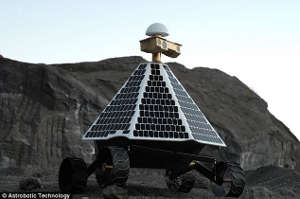 Astrobotic Technology - has already booked the launch of Falcon 9 for October 2015, collected the first prototype of the rover in the year of its foundation (2008) and won several grants from NASA for their achievements in the field of regolith research. They sell not only the place on their boarding module, but also the name (eventually Griffin was named), the place of landing and the route of the rover. Sticky guys, in general.
Astrobotic Technology - has already booked the launch of Falcon 9 for October 2015, collected the first prototype of the rover in the year of its foundation (2008) and won several grants from NASA for their achievements in the field of regolith research. They sell not only the place on their boarding module, but also the name (eventually Griffin was named), the place of landing and the route of the rover. Sticky guys, in general.Moon Express - founded in 2010 in Mountain View. Although the main goal of the company when it was founded was victory in the Lunar X Prize, the company quickly changed its priorities, leaving the race only as one of the short-term goals. The main goal of the company is the development of minerals on the Moon and research. For example, they have already concluded, for example, a research contract with NASA (it seems that without this office - nowhere), estimated at $ 10 million.
ARCA is a Romanian (!) Company developing its suborbital carrier aircraft and launch vehicle. She also participated in the Ansari X Prize. And now joined the fight for Google Lunar X Prize.
Selenokhod is a Russian team, a test seleno-test seems to have already been created, it’s still a long way from the landing module. Unlike many other rovers, our selenohod does indeed walk (on the principle of a walking excavator). Habré had several articles about this project, including how to support the project.
Micro-Space - the company was founded already in 1977, and its main goal is to reduce the cost of space programs due to the miniaturization of the output devices. Unlike many, it had its own lunar program long before the appearance of not only the Lunar X Prize, but also the X Prize Foundation itself, the purpose of the program was to extract helium-3 for thermonuclear fusion. The company also participated in the Ansari X Prize competition, where it was going to provide a vehicle for a “Spartan” suborbital flight.
Team FREDNET is an international team that aims to create open source, open hardware and open participation rover and lander, and generally promote openness ideals into space. Although my sympathies are wholly with them, it seems that outside the Internet, they have no real results.
 Separately, it is worth mentioning another, albeit similar, project of the X Prize Foundation — the competitions of lunar landing modules (Northrop Grumman Lunar Lander Challenge). The key players here are Armadillo Aerospace and Masten Space Systems , which specialize specifically in the landing modules, although their Xaero vertical take-off and landing apparatus, which was destroyed during tests last year, was positioned as a suborbital rocket. To date, the Masten fleet of vehicles consists of Xombie and Xoie landers, who won a total of $ 1.15 million from the X Prize Foundation. In development, an extra-heavy lunar XEUS module based on the first stage of the Centaur rocket, which will be able to prun and bring back into orbit a mass of 5 tons, or in one direction, up to 14 tons.
Separately, it is worth mentioning another, albeit similar, project of the X Prize Foundation — the competitions of lunar landing modules (Northrop Grumman Lunar Lander Challenge). The key players here are Armadillo Aerospace and Masten Space Systems , which specialize specifically in the landing modules, although their Xaero vertical take-off and landing apparatus, which was destroyed during tests last year, was positioned as a suborbital rocket. To date, the Masten fleet of vehicles consists of Xombie and Xoie landers, who won a total of $ 1.15 million from the X Prize Foundation. In development, an extra-heavy lunar XEUS module based on the first stage of the Centaur rocket, which will be able to prun and bring back into orbit a mass of 5 tons, or in one direction, up to 14 tons.Space exploration and infrastructure
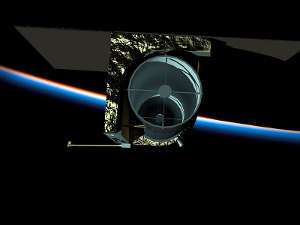 Planetary Resources - the company's long-term goal is to extract raw materials on asteroids, initially it is planned to develop the market of small space telescopes. These statements could be treated with irony if it were not for the list of investors, which includes Eric Schmidt and Larry Page.
Planetary Resources - the company's long-term goal is to extract raw materials on asteroids, initially it is planned to develop the market of small space telescopes. These statements could be treated with irony if it were not for the list of investors, which includes Eric Schmidt and Larry Page.Deep Space Industries is the second company created to develop asteroids.
Shackleton Energy Company , a company founded in 2007 in Texas, aims to develop water ice deposits in craters at the poles of the moon in order to get fuel from it by means of electrolysis and to accumulate it in low reference orbit stations. This will allow ships to be brought there, and not fuel supplies, which will significantly reduce the cost of space exploration. The company tried to raise $ 1.2 million on the RocketHub crowdfunding platform, but raised only $ 5,517, which is why the feasibility of its initiatives is in serious doubt.
Space Adventures is the very company that was engaged in marketing to send space tourists to the ISS. Now plans to launch a modified "Union" to the moon. For $ 100M per seat. Develops: Explorer and C-21 suborbital ships together with Myasishchev OKB. Also collaborates with Armadillo.
Mars One is a private project to fund the establishment of a colony on Mars by creating a reality show.
Spaceport America is the first privately owned spaceport founded by Virgin Galactic, SpaceX, UP Aerospace, and Armadillo Aerospace.
Source: https://habr.com/ru/post/180021/
All Articles